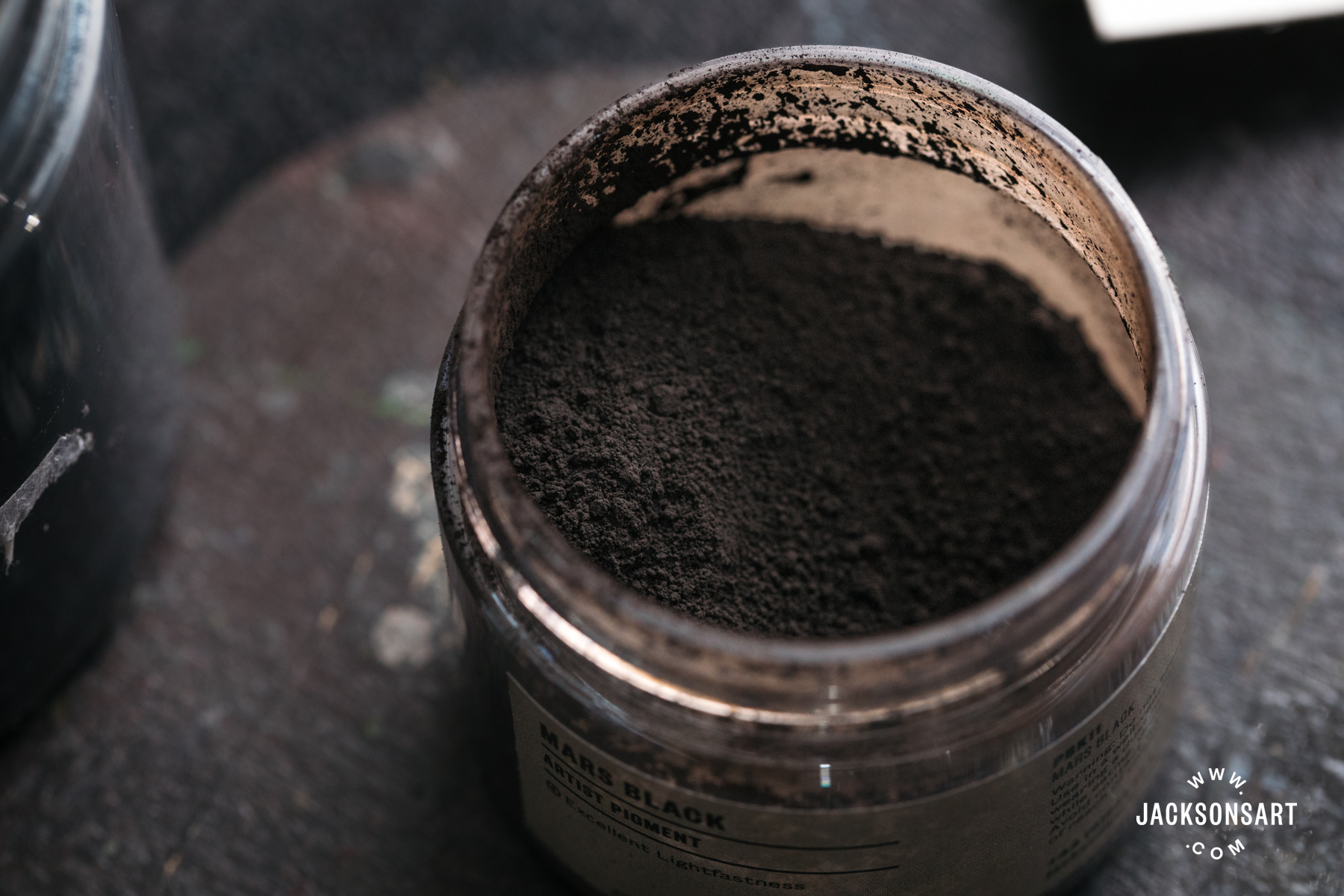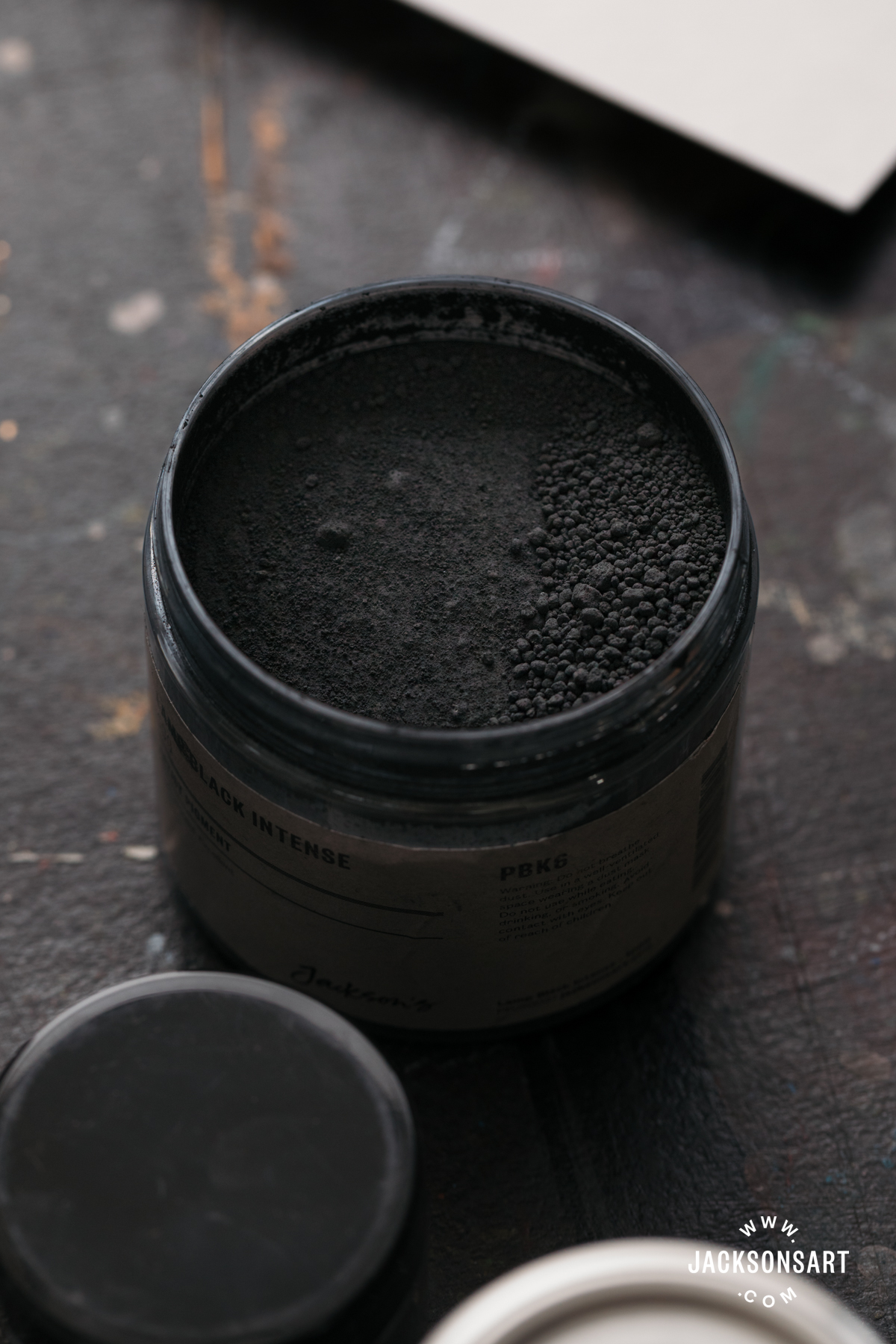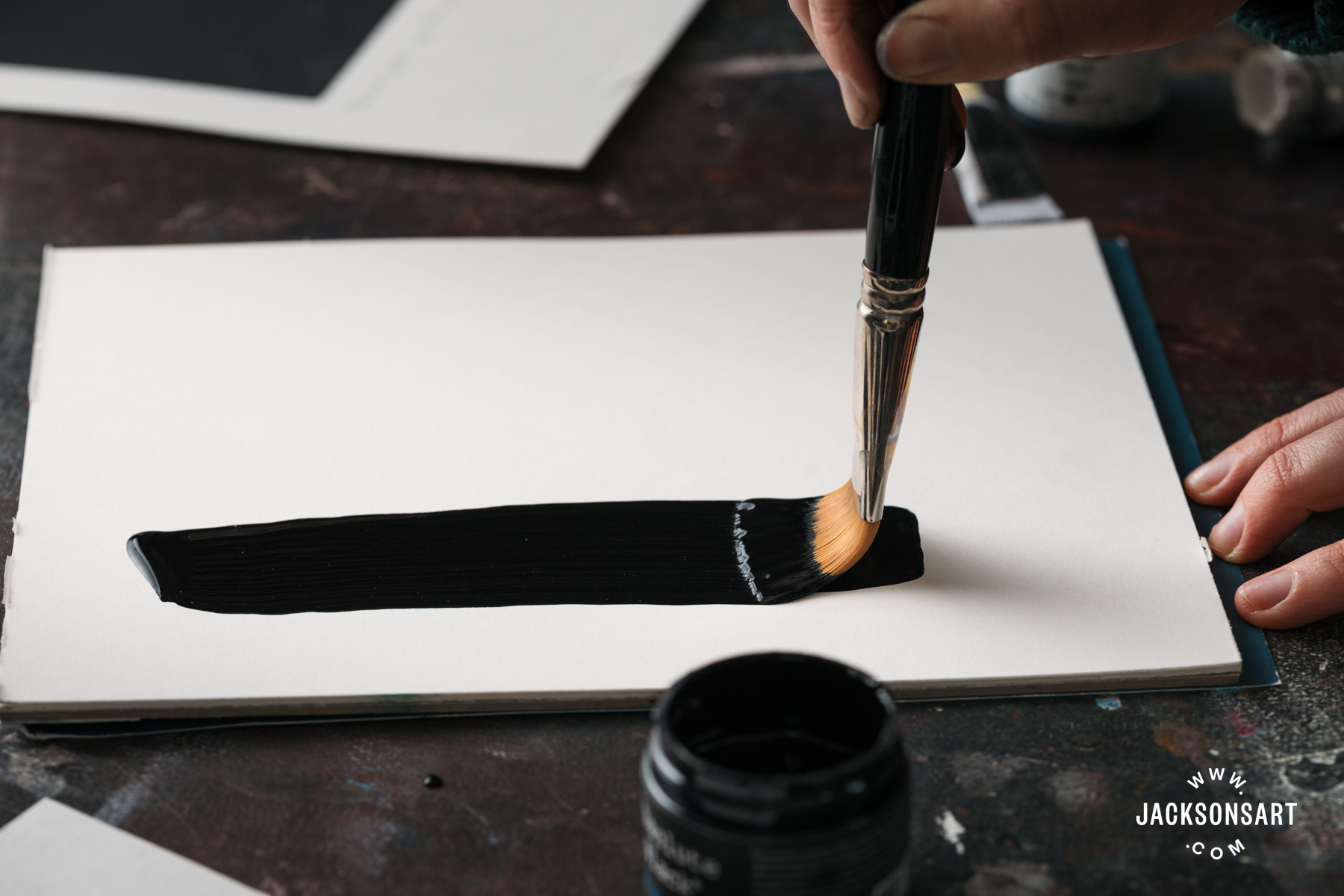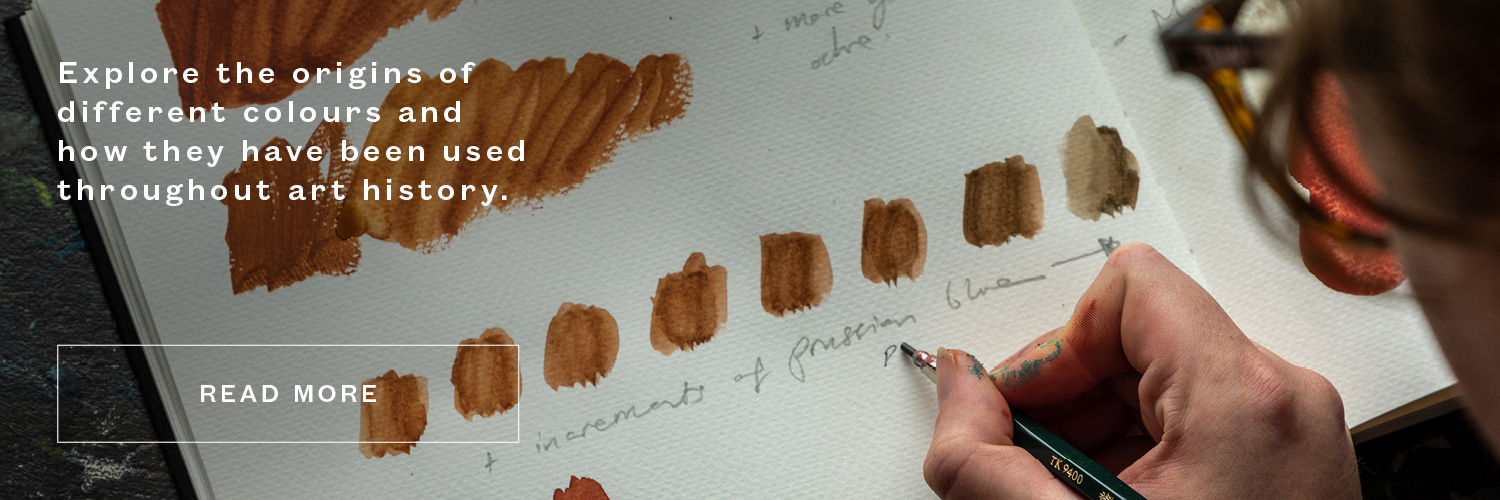Black paints are an essential part of many artists’ toolkits, but why are some more black than others? This article examines the multiple factors that determine how deep black oil, acrylic, and watercolour paints appear, and offers some tips for increasing their intensity in your painting.

The Science Behind Black Paints
What Makes a Black Paint Black?
The colour black is produced by the absence of reflected light. Visible light is a spectrum of electromagnetic waves, and what we recognise as different colours are really different wavelengths that move at different frequencies. Paint contains pigments that selectively absorb and reflect different wavelengths of light. For example, blue pigments absorb light in the red, orange, and yellow portion of the spectrum and reflect blue. Black pigments absorb most of the light that falls on them. In the absence of reflected light, our eyes perceive them as black.
What is the Blackest Paint?
Many black artist paints are made using carbon-based pigments, like Lamp or Bone Black, which have been used since prehistory. Others are made with inorganic pigments like Mars Black, a synthetically produced iron oxide. In recent years new, cutting-edge black coatings have been developed. The most well-known of these is Vantablack which absorbs up to 99.965% of visible light. Vantablack is not a pigment but a material grown in a lab made up of carbon nanotubes. It can’t be used in a regular paint binder and must be applied in a vacuum.
British artist Anish Kapoor sparked outrage in the artist community when he was given exclusive licence to use Vantablack in his work. It led to artist Stuart Semple creating a series of ‘Blackest Black’ paints. Artists are asked to confirm that they are not Anish Kapoor before buying them. Another product available to artists is Fleur’s Absolute Black, a water-based paint that claims to absorb over 99% of light. Both Stuart Semple’s Blackest Black and Fleur’s Absolute Black contain pigments, not a nano-material like Vantablack. It raises the question of what makes some black paints more black than others.
There are a number of factors that determine the depth of colour they produce:
The Pigment
There is no objective answer to “Which black pigment makes the blackest paint?” because the factors that determine how black a paint appears to our eyes are more complex than just the pigment it contains. However, many artists agree that Lamp Black (usually made with pigment PBk6) produces particularly dark paints. This is because of its uniquely small pigment particle size, high opacity, and extremely effective light absorbing properties.
The newest black pigments are made with carbon nanotubes (similar to Vantablack) that are about 0.001% of the width of a human hair. However, paints made with these nanopigments have limited availability and have yet to become a mainstream part of the artist palette. We tested one which had been bound in linseed oil, and it was semi-transparent and not as deep black as it promised. After two weeks the paint was still wet and readily lifted from the paper in flaky clumps. Perhaps the issue with drying is a clue as to why carbon nanopigments aren’t more widely available in oil paints.

Oil paint made with carbon nanotubes
The Pigment Load
Very simply, the more packed the paint is with light-absorbing black pigment particles, the more light is absorbed and the blacker it appears. Higher quality paint brands tend to have a higher pigment load, while student-quality paints may contain fillers which can give them a chalky appearance after drying, making black look a little grey.

Student-quality black gouache
Opacity
Transparent colours allow light to pass through the paint film, bounce off the layer below, and reflect back to our eyes. To make a very black paint, manufacturers aim for a very high degree of opacity so that as little light as possible escapes the paint film.
Surface Finish
The surface finish is perhaps the most important factor in producing really black paints. Paints that are described as the ‘blackest black’ are designed to produce a matt finish. Take Fleur’s Absolute Black, for example. The matt surface reflects very little light, contributing to the void-like effect.

From left: Fleur Absolute Black
Golden Carbon Black Acrylic Paint (PBk7)
When the pigment is bound with a very glossy binder, the paint film directly reflects a portion of light that falls on it. When it comes to coloured paints, a high degree of gloss produces a jewel-like luminosity that many artists love, but with black pigments there can be a distracting contrast between the dark colour of the paint and the bright reflections. For example, Golden say that their Carbon Black is the darkest black of their acrylic range, but the glossy finish makes the colour appear a little grey from certain angles.

From left: Fleur Absolute Black
Golden Carbon Black Acrylic Paint (PBk7)
You will often find that colours marketed as providing a very deep black are self-levelling. Self-levelling is a property that some paints have to ‘erase’ visible brushstrokes. Brushstrokes might be visible when it is first applied, but after a few minutes the surface looks almost completely smooth. With minimal textures that might cause light to bounce off the surface unevenly, the colour appears uniform and velvety.

Golden SoFlat Black Matte Acrylic Paint (PBk7), partly dry
Tips for Increasing the Depth and Intensity of Black Paints
If you find yourself looking at the black paints on your canvas, panel, or paper, and wondering why they lack depth, here’s how you can make sure they are being used to their full advantage.
Varnish your oil and acrylic paintings
It can be frustrating if you’ve been working on a painting and feel dissatisfied that the black, or other dark values, don’t look as deep as they should. There is a simple fix – apply a gloss varnish to the finished work to increase the saturation and increase contrast. It works by smoothing out the microscopic texture of the painting, so that light reflects more evenly from it. Our eyes then perceive more contrast in the tonal values and the colours, including black, appear more intense.
Use a paint marketed as being ‘extra black’
Fleur’s Absolute Black is water-based, matt, and self levelling, and produces a void-like effect when painted on a 3D object. Unfortunately, like Stuart Semple’s ‘Blackest Black’, Fleur don’t list what pigments are used to create it, which would be interesting to know. Absolute Black produces a water-resistant flexible film so it’s suitable for work on paper and canvas, and could be used alongside acrylic and gouache.
It would be particularly useful for illustrators who reproduce their work. Bear in mind that its velvety matt surface is disturbed when you touch it and becomes slightly glossy.

Shine on the surface of Fleur Absolute Black after being touched
Change your paper
Some papers are very absorbent and can cause watercolour and ink to sink, making them appear dull. Switch to a good-quality watercolour paper, which is internally and externally sized to control its absorbency. This way, the black pigment (or any other colour you use) will sit on the surface of the paper. It makes a world of difference.

Sennelier Indian Ink on Jackson’s Watercolour Paper Block (left) and standard copy paper (right)
Further Reading
Using Black Gesso for Depth in Your Painting
Chromatic Black: Mixing Nuanced Dark Values
Getting the Most Out of Using Black Pigments in Your Palette
Pigment Colour Index: Black Pigments
Shop Black Paint on jacksonsart.com





